# 15 The Discomfort of Visiting the Past in Nagasaki, Japan
On Dejima, battleships, shame, China, and male aggression
I’m walking alongside Dejima, the beautifully restored fan-shaped area where my Dutch ancestors traded with the Japanese for over two hundred years. We took their copper, camphor, and porcelain, and in exchange brought them silk, shark skin, and sugar. To this day, travelers flock to Nagasaki for its puddings and pastries. Quaint cookie ads decorate the vintage trams.
The Japanese built Dejima in 1636 as a man-made island off the coast, a detention center more than a port of entry. The shoguns of the Edo period kept their country closed. Nowadays, the area is separated from the city with moats and gates.
I photograph the wooden buildings in the low evening sun and pause for a tall tree my ancestors brought from Jakarta. I think of the Dutch colonization of Indonesia, the Japanese internment of Dutch citizens during WWII, and the atomic bomb detonated above Nagasaki on August 9, 1945. There’s no shortage of brutality in this world. Yet somehow this tree survived.
An unprovoked threat
Four men in their early twenties approach me from behind, speaking loudly in my mother tongue. I look at them, or perhaps I glare: They’re disturbing the evening’s peace and are taking up the entire street, side by side, as though they own the place.
Instantly, I feel embarrassed. Not for my own behavior but for theirs. Vicarious shame is the disgrace we feel in place of someone else who (in our eyes) should be yet isn’t embarrassed. We can experience it when someone at our table is disrespectful to a waiter, or when our travel companion doesn’t relinquish their bus seat to an elder passenger. It’s a moment that makes us cringe and sometimes act.
The threat is so unprovoked that for a moment I don’t react at all. My instinct tells me to freeze and not escalate the event.
The four Dutch men embarrass me because they’re giving my home country a bad name. The Dutch have been known for centuries as rude and insensitive, and I seem to be on the insane mission to show the world we can also be kind and considerate.
Right when the men pass me on the street, one of them yells in Dutch to his mates: “Oh, how I long to snatch that phone out of her hands and smash it on the stones!”
The threat is so unprovoked that for a moment I don’t react at all. My instinct tells me to freeze and not escalate the event. But soon my anger burns. Hot from the inside, yet externally composed, I say: “I wouldn’t do that if I were you.”
Two of the men turn around as though bitten by snakes. One pokes another in the ribs and says, “Wow! She was Dutch, dude!”
The poked guy now also turns around and glares at me. Does he feel temped to cause trouble? What did I supposedly do that made him want to smash my phone?
Perhaps he saw me as an infuriating influencer, recording her life instead of living it. Perhaps the mere presence of other travelers annoyed him. Perhaps he thought it was stupid of me to take my phone out on the street where it can so easily be snatched and he wanted to teach me a lesson. But we’re in Nagasaki, not Amsterdam or Bogotá, and I actually have an anti-theft strap around my wrist.
It was probably just bravado to impress his peers. A burst of testosterone.
A large battleship
“What was that all about?” my American husband asks. He doesn’t understand my language and cannot surmise what just occurred. I play it down, play it safe. I don’t want him to confront these men in my defense.
We walk to Dejima’s entry bridge, but when I spy the same four men marching into the open air museum, I change my mind. I have no desire to run into them again. They represent some of the key things wrong with this world: entitlement, greed, aggression.
My husband and I head to the wharf instead, where happy tourists are enjoying seafood on terraces with a view of the port.
A large battleship in the distance sparks my curiosity. Under the US-imposed post-war constitution, Japan isn’t allowed to have offensive military forces. So I wonder: Is this battleship a museum piece?
My good mood returns. I love mysteries. I love first days in an unknown city, exploring without a plan, letting my interests guide me.
Up close, the battleship looks far too high-tech to be an exhibit. There’s a small flag on the bow I don’t recognize. As I’m trying to get the military monster into my camera frame, I notice a uniformed man aboard looking at me through his binoculars.
Oh, oh—did I just break a law? I know better than to photograph military equipment in Vietnam or Mexico; it’s strictly forbidden. But this is Japan. They put up very clear signs here if they don’t want you to speak on the phone or eat your snack in front of a shop. Besides, my husband reminds me, they wouldn’t have docked this ship here in tourist central if its presence were some type of secret.
Intimidating China
I encounter two metal dumpsters on the quay. One says “Karton,” the other “Afval,” the Dutch words for “Carton” and “Trash.” Now I’m really lost. What’s my language doing here?
The hull near the stern carries the ship’s name, the Zr.Ms. Tromp, and the internet gives me the answers: A frigate of the Dutch Royal Marine is currently in Nagasaki to underline the more than 400-year-old friendship between the Netherlands and Japan and to ensure the principles of free passage, especially in the Indo-Pacific region, where tensions have threatened stability.
So my countrymen are assisting the Americans in intimidating China? I still have so many questions.
The topic that cannot be avoided
Just then, a group of about forty Japanese men run by in the small park alongside the quay, shouting some type of motivating chorus. Another burst of testosterone.
In the quiet that follows, an elderly Japanese woman approaches us bashfully, saying, “May I speak with you?” My husband and I nod and tell her where we’re from. The Netherlands and the United States, the two nations, besides China, that have probably influenced her native Nagasaki the most.
We chitchat and I try to guess her age. Could she have been a child when the atomic bomb exploded? Were her parents survivors? The topic is too huge and too intimate to discuss here, standing on the quay with this massive battleship by our side.
It’s only when our conversation peters out and we wish one another a pleasant evening, that I consider the reasons she might have wanted to talk with us. Had she wanted to know my reaction to this warship in her port? Had she wanted to know whether my American husband felt some type of shame in regards to the atomic bomb? I imagine her speaking to foreigners everyday, hoping she’ll one day catch someone brave enough to address their liability or at least their burdened conscience.
Before coming to Nagasaki, I watched the film Oppenheimer. I looked up how many people had died in Nagasaki because of the blast, the heat, the fires, and the radiation: between 60,000 to 80,000 people, nearly a third of the population. I learned that the only reason why sites such as Dejima can be visited today (and the tree from Jakarta survived) is because the Fat Man was accidentally dropped 4km north of its original target; this confined the blast to the Urakami Valley so that “only” 60% of Nagasaki was destroyed. I learned that hydrogen bombs can be a thousand times more destructive than the ones detonated over Hiroshima and Nagasaki. I looked up how many nuclear weapons still exist in the world and learned that some of America’s tactical nuclear heads are kept in the Netherlands and that our government has no say over how these weapons can be employed. I realized it concerns me a great deal more than previously assumed who America’s president is. I acknowledged that I’m far more entangled with war and power structures than I care to be.
I lean into my discomfort. There on the Nagasaki quay next to the massive Dutch frigate, I take a good look at myself. The shame I felt earlier upon seeing the four Dutch men, being louder and taking up more space than they should, was not vicarious. It was projected.
Entitlement, greed, and aggression
It’s easy to judge others, blame the men for going to war. It’s harder to admit that my ability to travel the world is closely related (if not directly due) to my ancestors’ self-serving behavior in the past. Entitlement, greed, and aggression is what brought me here.
Most of us like to believe we’re good people who mean well and cannot be blamed for the suffering in this world. But what would happen if we allow ourselves to think of our collective liability? What if we acknowledge the shadow world Naomi Klein has so accurately described in her must-read Doppelganger? Could we increase our empathy? Make better informed choices in the future?
I wrote about the discomfort of visiting the past after going to Galle Fort in Sri Lanka and will no doubt write about it again, because it’s a theme that consumes me. I believe it’s important to get out of our moral comfort zone. I believe change can happen if we face our role in the world with compassion and extend this compassion to others.
Paying attention
In Nagasaki, the frigate’s speakers crackle to life and broadcast Dutch orders.
“What are they saying?” my husband asks.
“They’re calling people on deck to lower the flag,” I reply.
The flag that was invisible to me before because of its listless hanging from the pole. No wind to blow it out with pride.
I turn my back on the warship and am walking toward the city’s hills, when something stops me cold. Not a burst of testosterone this time: It’s a tree alive with birds. Small twittering birds flying in and out of the branches with an urgency I cannot fathom. Their combined chitter is so exquisite it brings me to tears.
This, too, is the world, I remind myself. Paying attention to this, too, is my responsibility.
Desk Journeys aka Book Recommendations
I recently listened to the audiobook version of Bending Adversity—Japan and the Art of Survival by David Pilling, which was as informative as it was entertaining. It taught me about Japan’s history as well as its contemporary idiosyncrasies, and made me understand the country a little better.
For a vivid fictional depiction of life on Dejima during the 18th Century, read David Mitchell's novel The Thousands Autumn of Jacob De Zoet. I love Mitchell’s writing, and was impressed by how much detail he was able to share without showing it too obviously, but the shenanigans of the Dutch men could ultimately not hold my interest until the end.
Concrete Travel Advice on Nagasaki
Nagasaki is a fascinating city of history, harbors, and hills. But it’s not, as some guidebooks claim, a vibrant, charming gem. I stayed in a formerly abandoned house for a week, visited different neighborhoods every day, and was never bored. That said, you could see the city’s highlights in one very long or two well-planned days.
Not to be missed are:
The sites connected to the remembrance of the atomic bomb: the Atomic Bomb Museum, the Hypocenter park, the Peace Park, the Peace Memorial Hall, and the one-legged Torii gate of the Sanno shrine. (And potentially: the Shiroyama Elementary school, the Nakai Takashi Memorial museum, and the restored Urakami Cathedral)
Dejima, the beautifully restored area from where the Dutch traded exclusively with the Japanese during their period of isolation (1639–1853).
Glover Garden (and the Oura Cathedral), a park where houses built in Western style from the end of the Edo period have been moved or restored.
Shinchi Chinatown, the oldest Chinatown in Japan, where you can now find cheap eateries, liquor stores, night entertainment, pachinko parlors, dimly lit alleys, and tourists posing in front of the many impressive gates.
The Megane (Spectacles) Bridge, originally built in 1634, survived the atomic blast, only to be taken down by floodwaters in 1982. Like so many things in Japan, it has been restored to its old glory using the original stones. People drop coins from the bridge onto its pillars—in the hopes to see better?
Temple street (Teramachi-dori), where you can visit a multitude of (Chinese) Buddhist temples, among which the famous Sofuku-ji, weave through hillside cemeteries, and climb up the many steps to the Kazagashira Park for a spectacular view over the city.
For the most current practical advice on visiting Nagasaki, including opening times, tourist activities, hotel recommendations, public transportation, and local festivals, you’ll find all you need and more at: Discover Nagasaki. For a quick overview I recommend: Japan Guide.
Time to Say Goodbye
Currently, Daniel and I are on a trip. Sounds odd, perhaps, considering we’re nomads, but we tend to be slow travelers, staying in places for a week or three months, and spending lots of time writing. Now, we’re sightseeing like regular tourists, lifting our bags and hopping on trains or boats nearly every day. We just arrived on Naoshima, one of the art islands in the Seto Inland Sea—I’m ready to be amazed.
All my best,
Claire.
P.S. What’s your favorite book or newsletter on Japan? What must I read to better understand the Japanese?


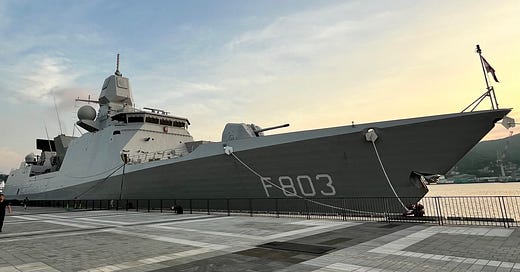


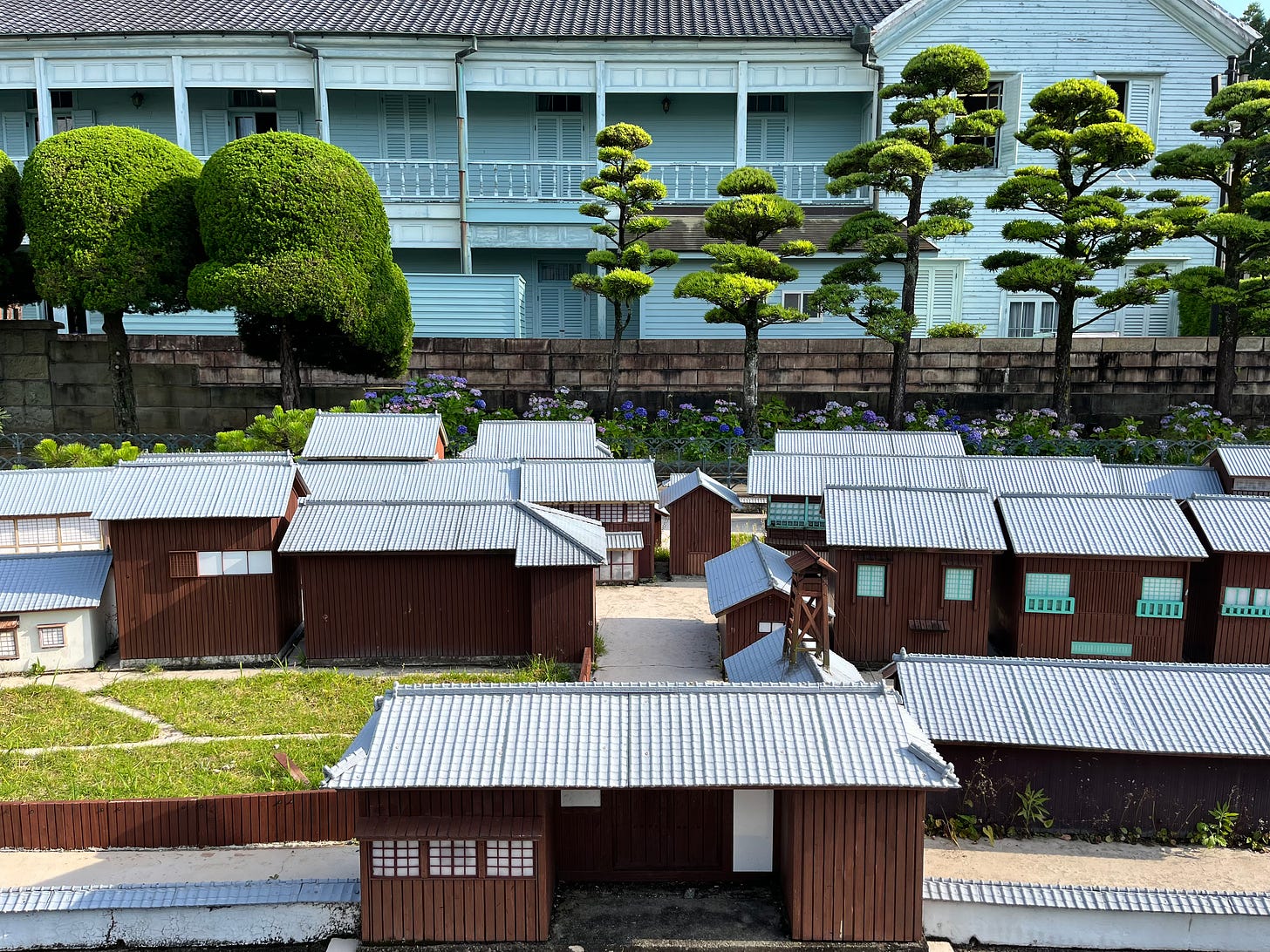
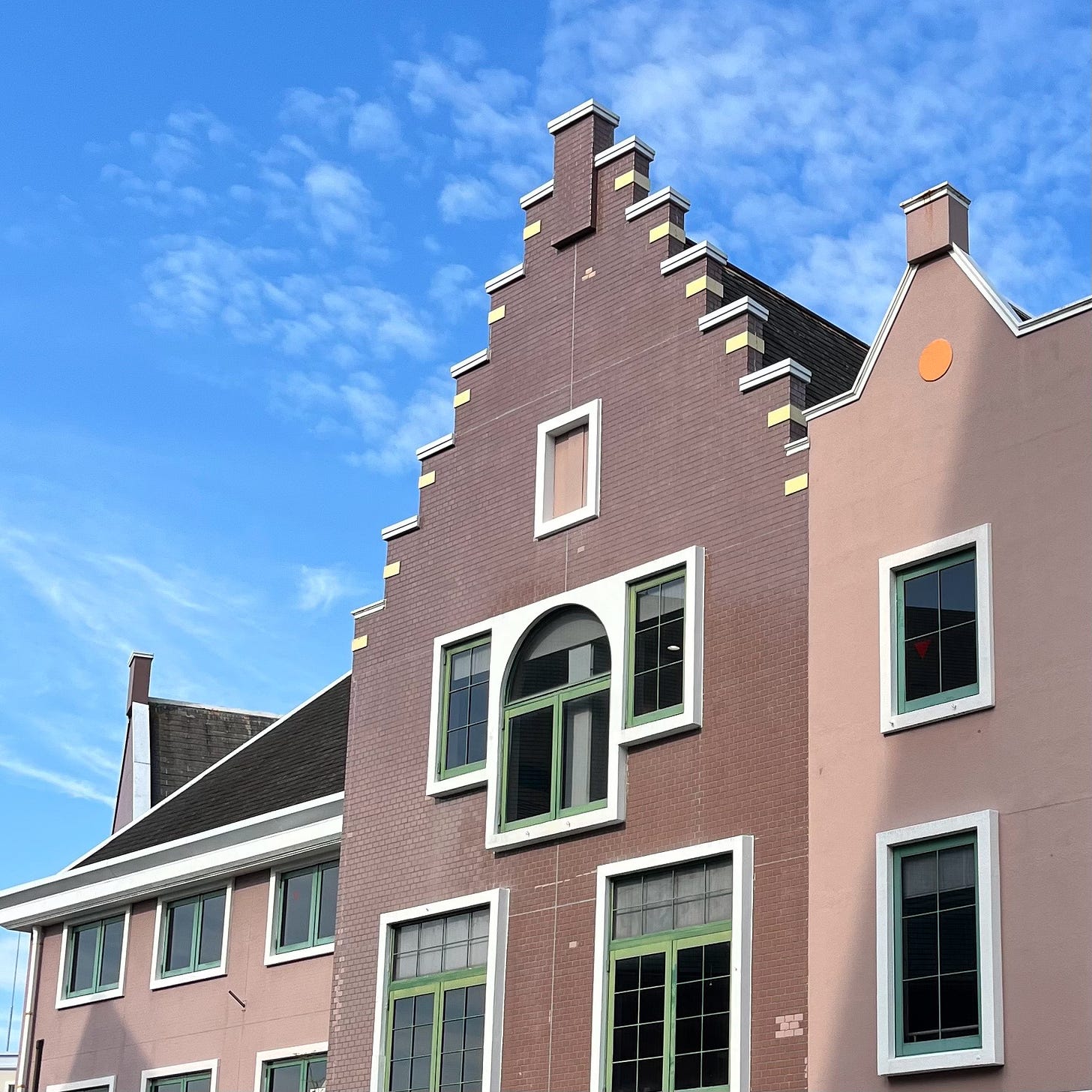
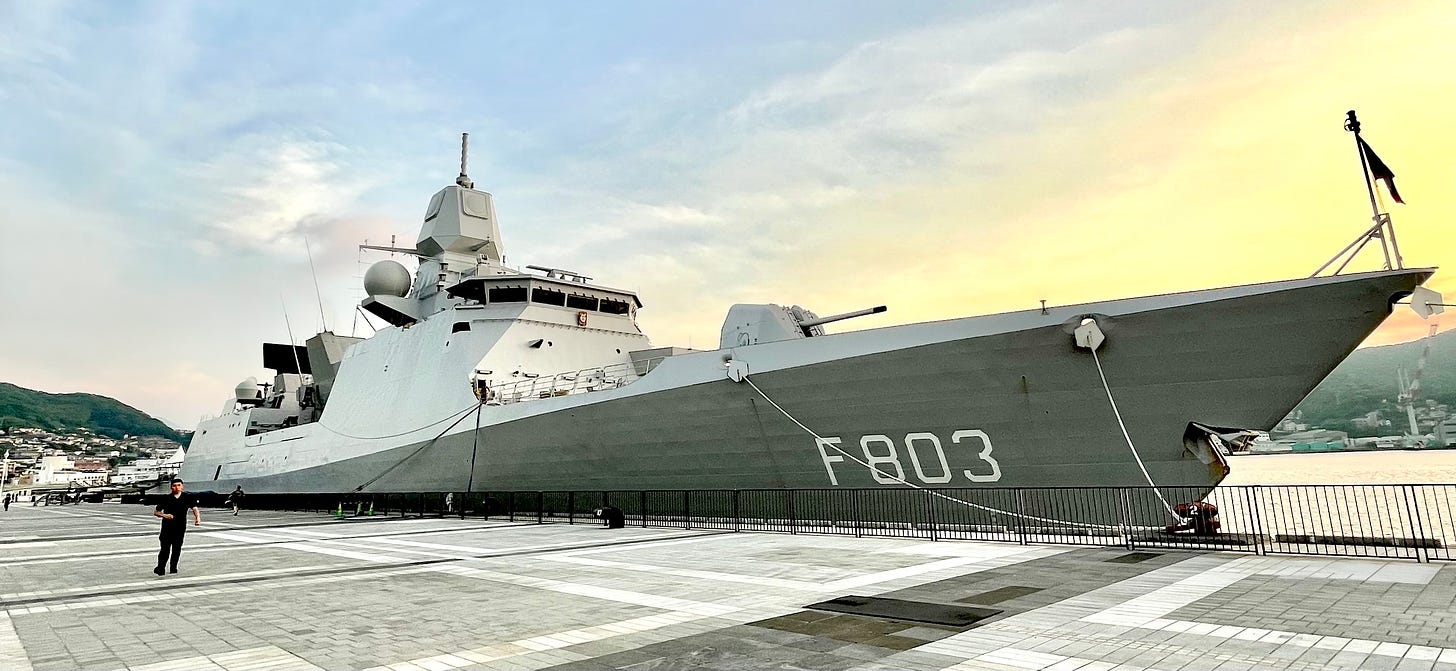
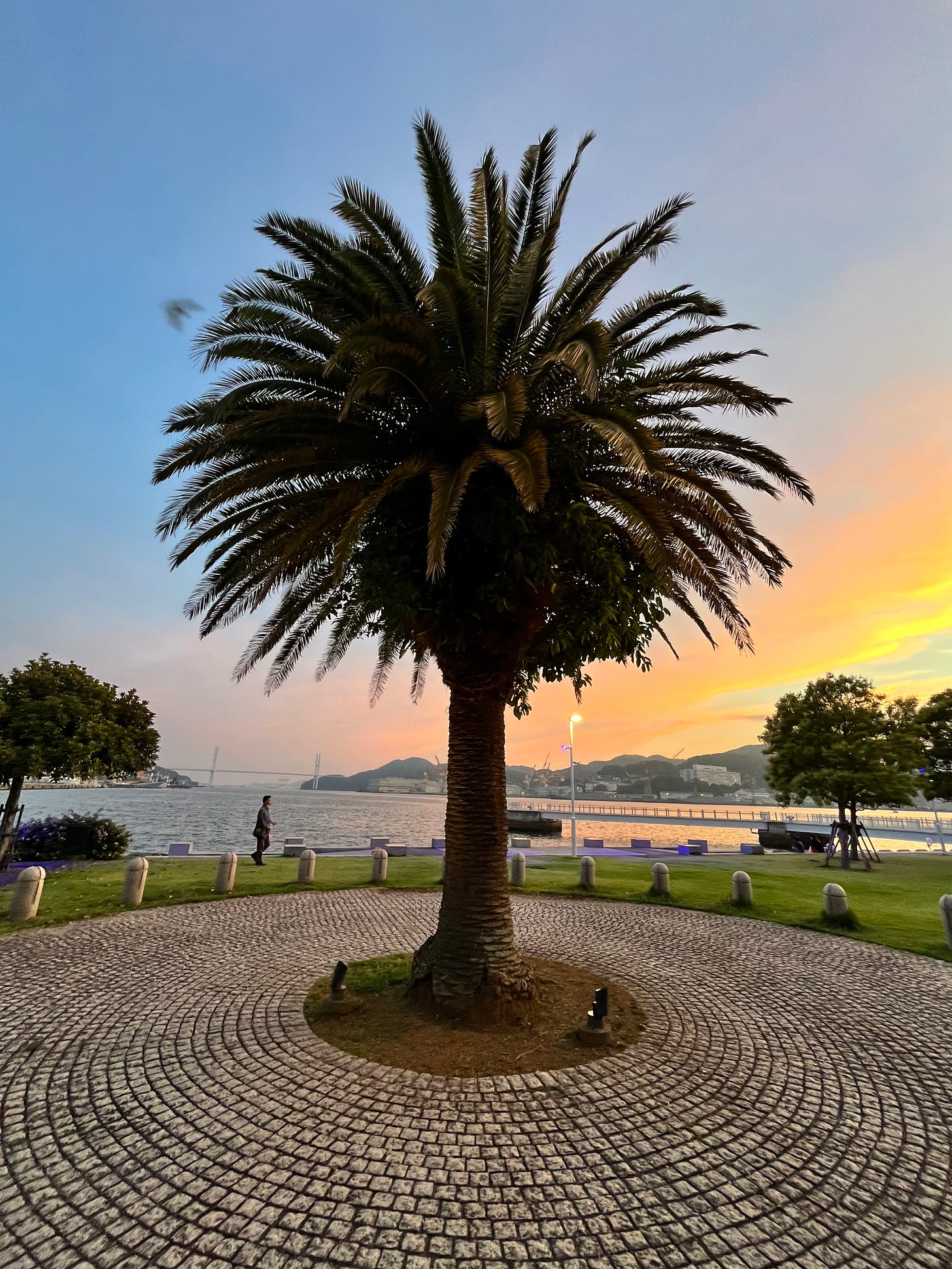
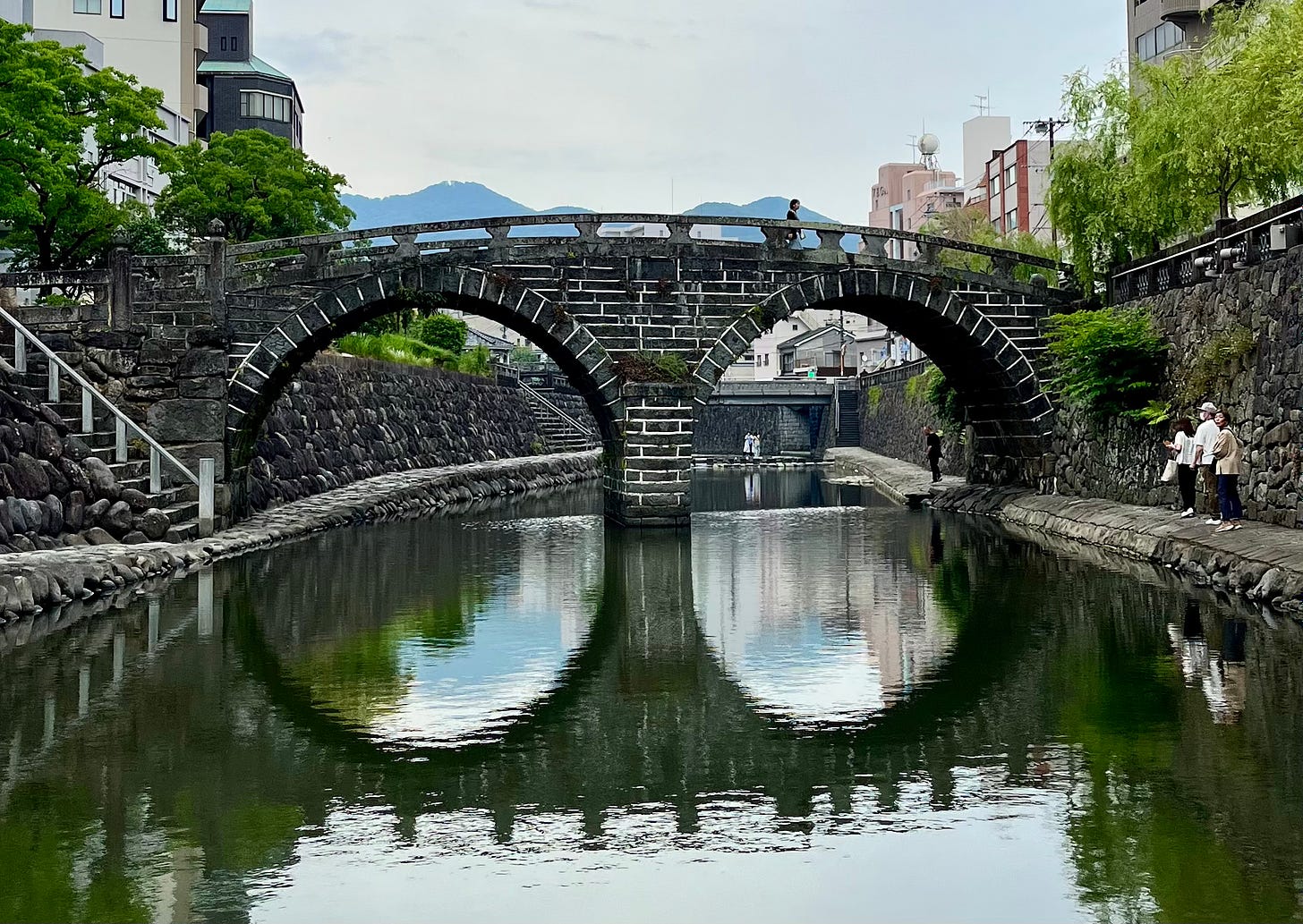
Probably one of the best and funniest depictions of the “special position” the Dutch occupied during the period of Japan when all other European presence was forbidden, is in episode 6 of the anime, Samurai Champloo, in which a gay Otaku-esque Dutch guy is so smitten with Japanese aesthetics and its relative apparent acceptance of gay love, that he abandons his Dutch government/army unit in an attempt to blend in and become Japanese. Truly funny and perceptive stuff. There’s some proper full on Dutch spoken in it as well, amidst the Japanese. I never made it as far south as Nagasaki or Hiroshima, though I did live in Taiwan, which is much further south. Strangely enough, I had a great time with a couple of Dutch guys in the week I was in Osaka, who were living there. One night they showed me the “special” red lights district, also technically illegal and officially off limits to foreigners, where the girls all dressed up in different kinds of costumes and themed outfits, including Disney ones, and beamed from the street sides.
“all this is controlled by Yakuza,” one of them said. The other guy joked to me, “that girl was really checking you out, I think she might do you for free if you come back after she’s finished working!”
Surreal times.
In your comment about the Japanese in concentration camps in the United States my dad was the high school English teacher in one of the camps and having interview him and his students and also some of the teachers that he worked with, I learned that there was no strictlyJapanese really at least in the camp where they were. These people were Japanese and American. They had left all the homes behind everything that they left behind, was probably never going to be theirs again, and they were used to the American way of life.
There were multitudes of life changes for them until the war ended in 1945. Empty barracks were their homes. Furniture - beds, etc. could be ordered from Montgomery on Wards. My pregnant mother was bitten by A snake while reaching under the sink. Off to the “hospital” where the nurses could do nothing until snake type discovered. Non- poisonous! My thoughts of my Indiana parents learning to live on AZ desert leaves me with unanswered questions how did they manage this change!?